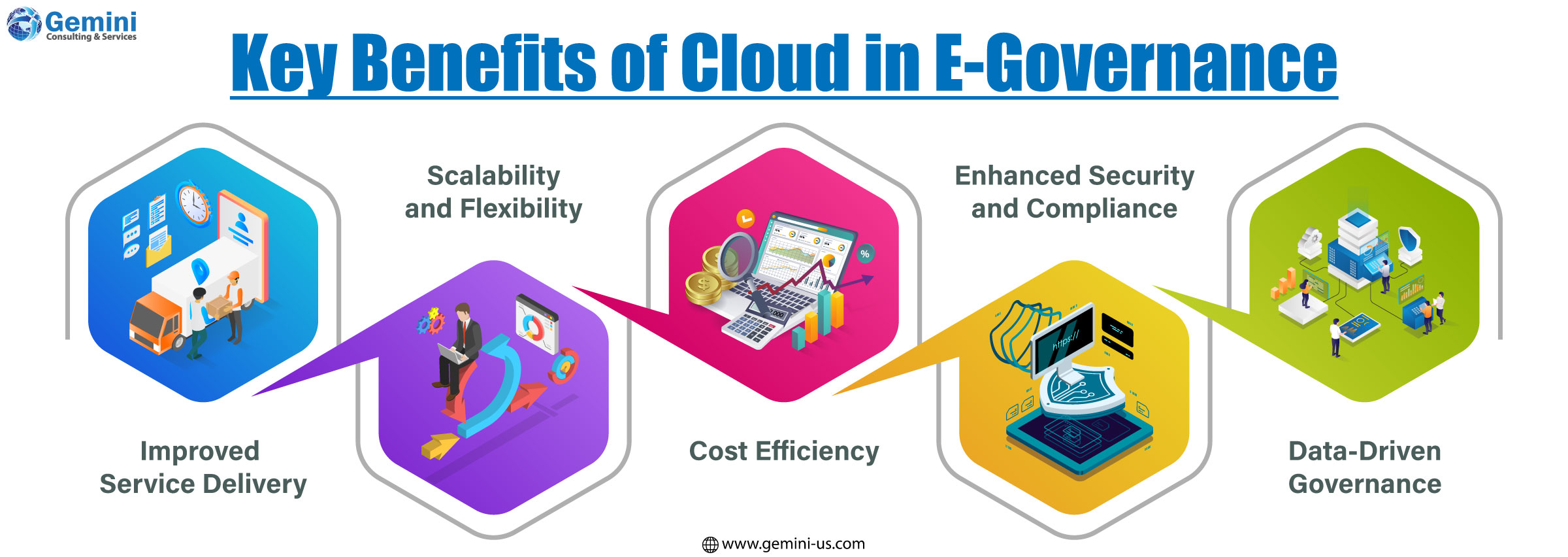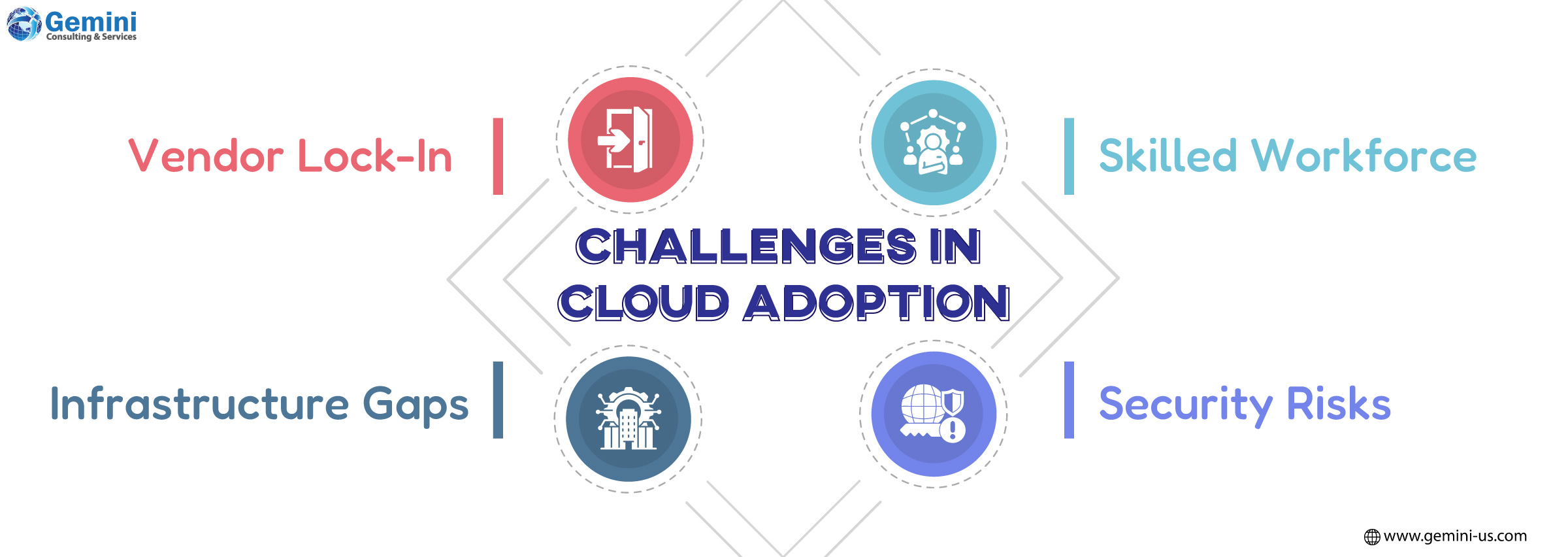In today’s fast-paced digital era, the way governments deliver services is undergoing a profound transformation. Citizens no longer compare government services with other government agencies but with the seamless, on-demand experiences offered by private digital platforms. From renewing a driver’s license to accessing healthcare information, people expect speed, transparency, and efficiency. Meeting these rising expectations requires governments to reimagine how they operate. At the heart of this shift lies cloud computing, a technology that is redefining the future of governance.
Cloud adoption in the public sector is not just about technology upgrades, it represents a fundamental change in how governments engage with citizens, manage resources, and ensure accountability. By enabling scalability, efficiency, and stronger security, cloud technology has become the backbone of modern e-governance.
The Role of Cloud in E-Governance
E-governance refers to the use of digital platforms to deliver government services, improve transparency, and engage citizens. The cloud makes this possible by offering governments a reliable, scalable, and cost-effective infrastructure to host critical applications and services. Instead of relying on outdated, siloed systems, governments can now centralize operations, automate processes, and provide seamless access to services anytime, anywhere.
Whether it’s AI-powered chatbots guiding citizens, digital identity platforms ensuring secure access, or smart city solutions optimizing urban services, the cloud is no longer an optional upgrade, it is a necessity for future-ready governance.

1. Improved Service Delivery
Cloud platforms streamline service delivery by cutting out redundant processes and reducing paperwork. For example, tasks that once required long queues or physical visits, such as applying for certificates, paying bills, or accessing public records, can now be completed online within minutes. This convenience not only saves citizens’ time but also enhances trust in government systems.
2. Scalability and Flexibility
Public service demand is never constant. During emergencies, elections, or natural disasters, requests for government services can spike. Cloud systems allow agencies to scale resources instantly to handle surges without service disruption. For example, during the COVID-19 pandemic, cloud platforms enabled governments to quickly set up digital health systems and manage vaccination registrations efficiently.
3. Cost Efficiency
Traditional IT infrastructure is costly to maintain. Governments often spend heavily on hardware, software updates, and skilled manpower to keep legacy systems running. With cloud adoption, the need for physical infrastructure is reduced. Pay-as-you-go models help governments allocate resources wisely and focus investments on priority areas rather than IT upkeep.
4. Enhanced Security and Compliance
Citizens entrust governments with highly sensitive data such as health records, tax details, and legal documents. Cloud environments offer advanced security features like encryption, multi-factor authentication, and real-time monitoring to safeguard this information. Many cloud providers also comply with international data protection standards, making it easier for governments to meet legal and ethical requirements.
5. Data-Driven Governance
Cloud-based analytics tools empower governments to make evidence-based decisions. By analyzing large volumes of data in real time, policymakers can better understand citizen needs, identify service gaps, and design more effective programs. For example, transportation data stored on the cloud can help cities optimize traffic flow, reduce congestion, and improve public safety.
Real-World Applications of Cloud in Governance
Several governments worldwide are already leveraging cloud technologies to enhance their e-governance systems:
- Estonia is recognized as a global leader in e-governance, using cloud platforms for digital IDs, e-residency, and online voting. This approach has made public services more transparent and accessible while boosting citizen participation.
- India’s Digital India initiative has introduced cloud-based platforms for income tax filing, Aadhaar authentication, and digital payment systems. These solutions not only save citizens’ time but also reduce bureaucracy.
- The U.S. government’s cloud.gov provides federal agencies with a secure, compliant platform to build and deploy digital services quickly, ensuring greater agility in public administration.
These examples show that cloud adoption is not limited to high-income countries. With the right strategy, even developing nations can harness its benefits to improve governance.
Transforming Critical Sectors Through Cloud
Public Safety
Emergency call services like 911 networks in many countries rely on analog systems that lack flexibility. Cloud solutions are modernizing these networks with AI-driven tools that automatically transcribe calls and enable dispatchers to operate from anywhere. This flexibility is crucial during crises, ensuring uninterrupted service delivery.
Transportation
Transportation agencies are increasingly using cloud systems to support smart mobility solutions. By enabling real-time communication between vehicles and infrastructure, cloud platforms support traffic monitoring, connected vehicles, and even autonomous transport pilots. This leads to safer, more efficient urban mobility.
Healthcare
Healthcare systems powered by the cloud offer doctors and hospitals real-time access to patient data. This speeds up diagnosis and treatment while ensuring better coordination across medical facilities. During the pandemic, cloud solutions enabled governments to roll out telehealth services and manage patient data securely.

While the benefits are significant, governments must address certain challenges to fully leverage cloud computing.
- Vendor Lock-In: Relying heavily on one cloud provider can create long-term dependency, making it difficult to switch platforms later. Multi-cloud and hybrid approaches can help mitigate this risk.
- Infrastructure Gaps: In regions with poor internet connectivity, cloud adoption may face hurdles. Governments must invest in digital infrastructure to ensure equitable access.
- Skilled Workforce: Cloud adoption requires trained staff to manage, troubleshoot, and optimize systems. Continuous training programs are essential.
- Security Risks: While cloud providers offer strong security, governments must remain vigilant against cyber threats through strict governance and regular monitoring.
The Future of Cloud-Driven Governance
Looking ahead, the role of cloud in governance will only expand. Integration with emerging technologies like Artificial Intelligence (AI), Machine Learning (ML), and Blockchain will take e-governance to the next level.
- AI and ML will automate processes, predict citizen needs, and personalize services.
- Blockchain will add transparency and security in processes like land records, supply chains, and voting systems.
- IoT-Enabled Smart Cities will use cloud platforms to optimize resources, reduce energy consumption, and enhance quality of life.
Hybrid and multi-cloud models will also become more common, allowing governments to balance flexibility, cost, and security.
If you are a government agency looking for improving efficiency using cloud technology, Gemini Consulting & Services is here to assist you. With over a decade of experience in e-governance, we have helped state and central governments in India to offer citizen-centric services using cloud. Contact us to learn how our experts can help you build web and mobile applications and other solution that offer better living standards to people.
Conclusion
Cloud computing has moved from being a technological advantage to becoming a necessity for effective governance. It empowers governments to deliver faster, smarter, and safer services while reducing costs and engaging citizens more effectively. From enhancing transparency and accountability to enabling real-time decision-making, the cloud is the foundation of modern e-governance.
As governments continue their digital transformation journeys, those that embrace cloud technologies early and strategically will be better positioned to meet the expectations of their citizens and build resilient, future-ready public systems.
In short, the cloud is not just supporting e-governance, it is driving it forward.



